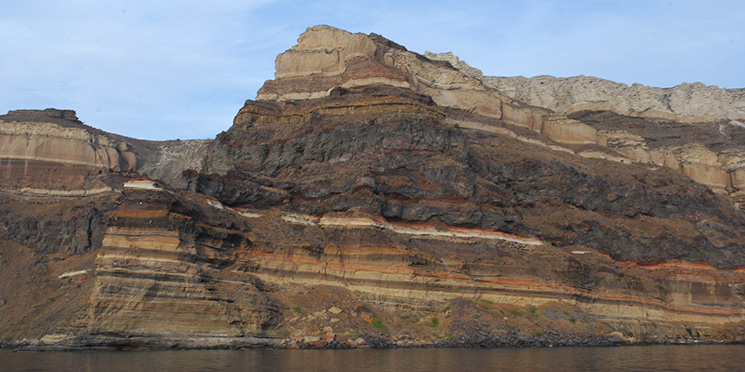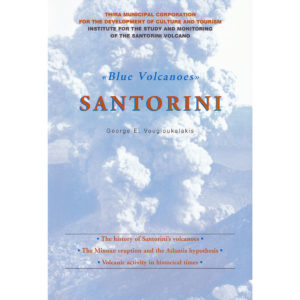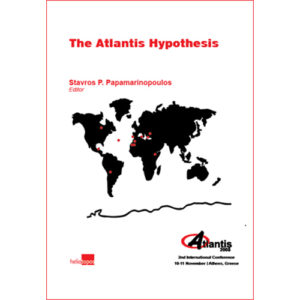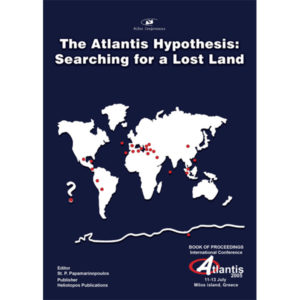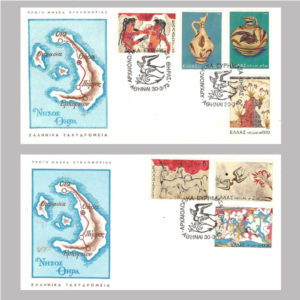Santorini Geology
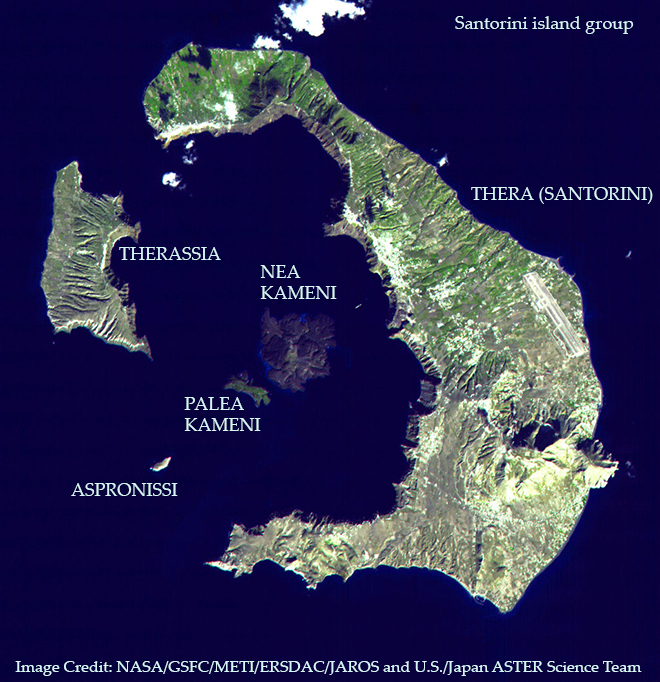
Volcanic eruptions
Special interest is drawn to Santorini and its geological formations. The island itself owes its very existence to the volcano. The present-day crescent shape of the island is a consequence of the activity of the volcano in prehistoric times.
The last huge eruption of the volcano dates back 3,600 years (17th century B.C.), to the late bronze age. Thirty million cubic meters of magma in the form of pumice and ash were blown to a height of up to 36 kilometers above the island. Pumice deposits, dozens of meters thick, buried one of the most prosperous pre-historic settlements of that period, feeding the myth of the lost Atlantis.
After this major eruption, a mild activity of the volcano continues into the present (the most recent eruption occurred in 1950) building up two small islands within the caldera, Palea and Nea Kameni. These islands represent the volcano’s most recent activity.
The only volcanic caldera accessible by boat
The marvelous dry climate and continuous sunshine create year around conditions which are perfect for observation, photographs and videos under an extraordinary variety of natural lights and colours. It is the island of Santorini that offers the visitor the unique and exceptional advantage of reaching the interior of a volcanic caldera by boat.
For further details on the history of Santorini’s volcanoes, the Minoan eruption and the Atlantis hypothesis as well as the volcanic activity in historical times, you may wish to look this book up on our e-shop.
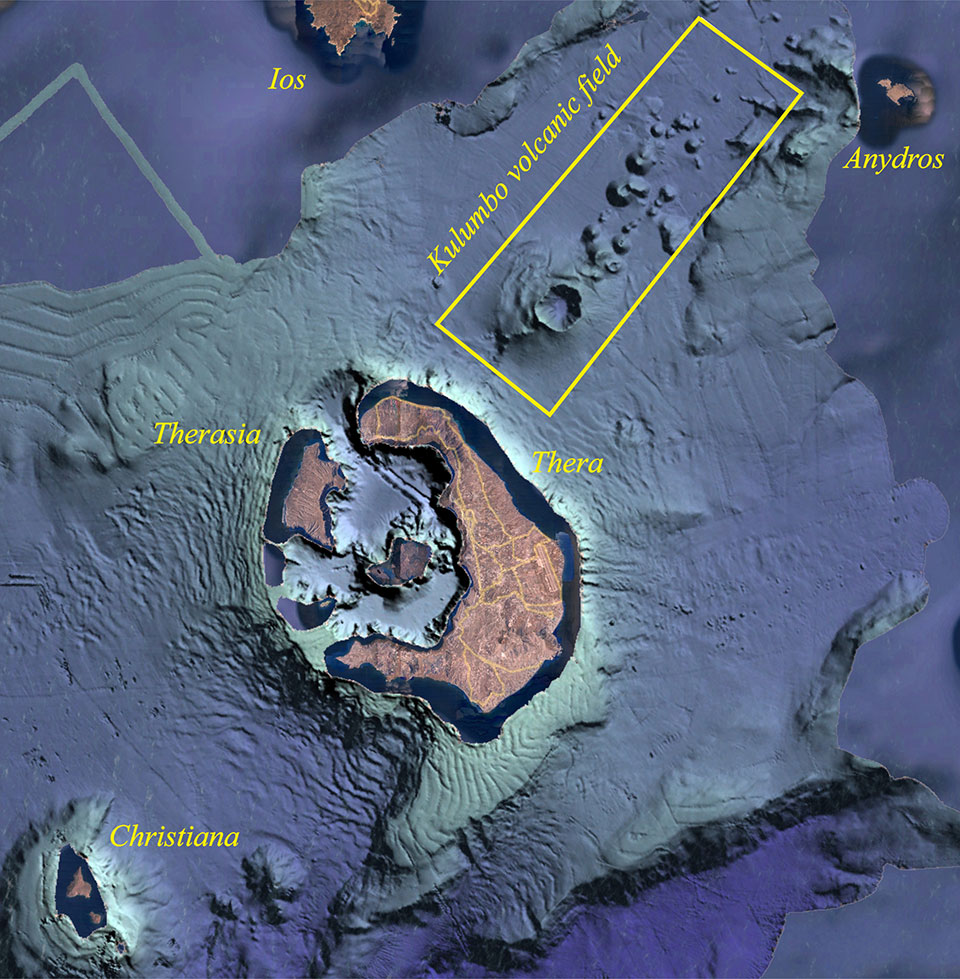
The Kulumbo volcanic field
North-east from Thera Island, at a distance of 4 to 24 kilometers from Cape Kulumbo, 26 submarine volcanic centers have been identified. Twenty-five of them are small, probably monogenetic volcanic cones, while the second in order of distance from Thera is the central polygenetic active volcanic center of Kulumbo.
The underwater volcano of Kulumbo is known from its unique historical eruption during September – December 1650 A,D.
After that eruption, the volcano remains dormant to this day. The only manifestations that indicate its active status are the seismic events that often occur in the area and the outflow of hot fluids up to 220°C, in the northern part of the crater floor, where they create spectacular “chimneys” from the salts and minerals they deposit in their exit vents.
Read more:

